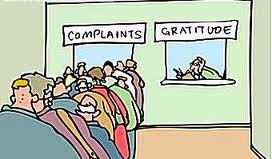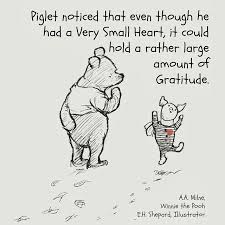
Leading with Gratitude…A “How-To” Guide
How many of us regularly stop to thank and recognize others at work who make our lives a little bit easier? Life is so insanely busy, and it’s hard enough trying to get through the day-to-day and week-to-week, how do you even make time for thanking people?
The benefits of recognizing people for their contributions are far-reaching and well established. Most people become more engaged, more energized, and contribute more when they feel valued and recognized. Additionally, they stay at the company longer and are more productive. What’s not to like? Why is it, then, that so many feel that their company or their manager does not value them enough? It only takes a moment to thank someone, and it makes a big difference.
You may ask, what’s in it for you? When people help you get something done at work, showing appreciation has enormous benefit, both for your company overall (happier, more engaged employees) as well as, in the end, for you and your career. While this is far from the end goal, it is a rewarding side benefit. When you thank people and teams you are leading or engaging with, and give them recognition for work they have done, the next time you need something, they will be more likely to want to listen and engage with you. While people prioritize their work based on company or team priorities, there is often subconscious prioritization based on “who’s asking”. If you have a reputation for appreciating and recognizing the work, and showcasing the value of the outcomes to others, it gets around.
Additionally, showing gratitude on a regular basis is now scientifically recognized as a contributor to an individual’s well-being and health. So it’s a win-win-win…the receiver, the giver and the company all benefit.
It is hard to remember to thank others on a regular basis, given all the other priorities in today’s fast-paced world. I remember one senior executive who, once a year at Christmas, would hand-write personalized messages of appreciation to each person on his team. These were deeply valued by the recipients, and it was a wonderful gesture from someone who knew that remembering to say thank you didn’t come naturally to him. Ideally, a little more often would be even better. I am sharing some best practices I have learned from watching strong leaders around me over the years.

Build Two Thank Yous Into Every Friday: We all know it is critical to catch issues before they become major problems that come to the attention of our key stakeholders, or bosses, or superiors. So we are all super-watchful for anything going wrong. However, when things go right, it often passes unnoticed. A manager I knew decided that on the commute home Friday night, he would thank at least two people, leave at least two messages. He said it was amazing how many people he could think of that he needed to thank, when he made it a regular part of his routine. Frequency matters.
Find the People in Jobs that Never Get Thanked: Some years ago, my boss led a team of 7,000 people in sales and customer service. She was known as a tough operator, but also a visionary leader who inspired passion among her teams. One example of the stories that made her a legend? When she traveled to the call center in another city, she visited and spent time at midnight with the customer support team on the overnight shift. This team had never met a senior executive, let alone being recognized and appreciated by one. Think about the sometimes invisible roles and unsung heroes that help to keep everything running smoothly. Then find these people and make your recognition heard.
Celebrate the Successes: Too often, we go straight from one deliverable to the next, especially given the urgency that often surrounds many work environments. When an initiative you are leading or benefiting from is successfully completed, take the time to celebrate. Get the team together and make time to be happy and hang out together, to delight in the satisfaction of a job well done. The benefit of increased bonding alone makes this worth doing, in addition to the boost in self-esteem and feeling of recognition for all team members. Is it a cross-functional team from different parts of the company? Then you gain even more benefit for any future initiatives.
Remember Teams Win, not People (and usually not just one person) Some companies have a “hero” culture. They tend to recognize one person for a Big Idea, sometimes announcing it with great fanfare and laudatory praise. In reality, most Big Ideas would never see the light of day if there was not a team working to execute and deliver on them. As a company gets bigger, it takes a village to make things happen, and it gets more and more important to recognize the groups of people that drive successful execution of an initiative, versus just the one person who conceived of the idea or led the team.
Shout it from the Rooftops – and let his/her boss know too: The more people you tell about the wonderfulness of the people and the project, the better, assuming, of course, that the audience you choose has some association with and some understanding of the value delivered. And especially make sure the person’s boss is made aware. Many projects are broad and cross-functional, and not necessarily in clear line of sight to the managers of those on the team. It becomes even more important in these cases to ensure that the right people know. Make sure you communicate the value of the initiative, and the effort of the team responsible, to senior management in all groups involved.
In the words of Ralph Waldo Emerson, “Cultivate the habit of being grateful for every good thing that comes to you, and to give thanks continuously. And because all things have contributed to your advancement, you should include all things in your gratitude.”

And, on a less philosophical note, in the words of A.A. Milne in Winnie the Pooh, “Piglet noticed that even though he had a Very Small Heart, it could hold a rather large amount of Gratitude.” May we all find this to be true of ourselves. Try leading with gratitude and you may thank me for it.
Originally published on LinkedIn